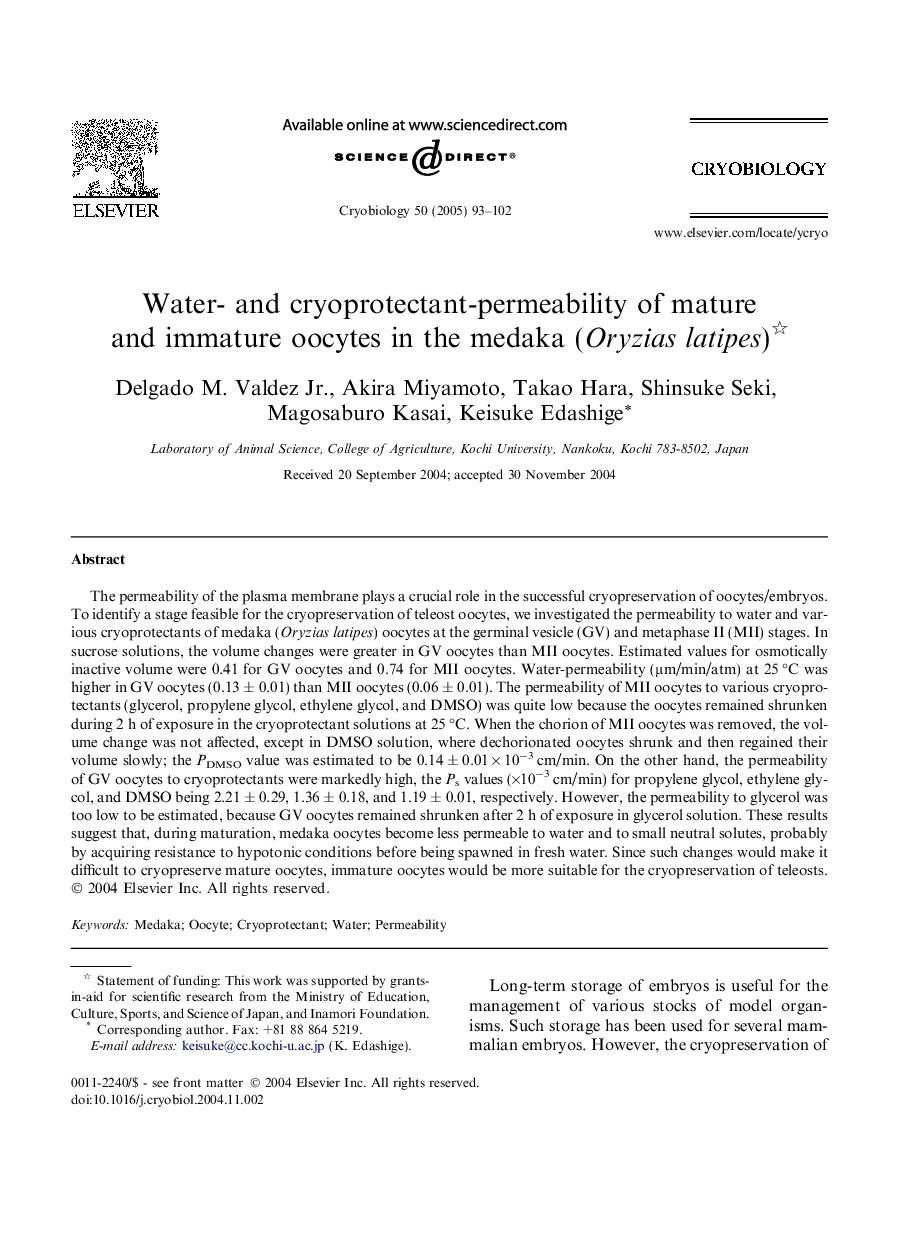| کد مقاله | کد نشریه | سال انتشار | مقاله انگلیسی | نسخه تمام متن |
|---|---|---|---|---|
| 10928891 | 1092962 | 2005 | 10 صفحه PDF | دانلود رایگان |
عنوان انگلیسی مقاله ISI
Water- and cryoprotectant-permeability of mature and immature oocytes in the medaka (Oryzias latipes)
دانلود مقاله + سفارش ترجمه
دانلود مقاله ISI انگلیسی
رایگان برای ایرانیان
موضوعات مرتبط
علوم زیستی و بیوفناوری
علوم کشاورزی و بیولوژیک
علوم کشاورزی و بیولوژیک (عمومی)
پیش نمایش صفحه اول مقاله

چکیده انگلیسی
The permeability of the plasma membrane plays a crucial role in the successful cryopreservation of oocytes/embryos. To identify a stage feasible for the cryopreservation of teleost oocytes, we investigated the permeability to water and various cryoprotectants of medaka (Oryzias latipes) oocytes at the germinal vesicle (GV) and metaphase II (MII) stages. In sucrose solutions, the volume changes were greater in GV oocytes than MII oocytes. Estimated values for osmotically inactive volume were 0.41 for GV oocytes and 0.74 for MII oocytes. Water-permeability (μm/min/atm) at 25 °C was higher in GV oocytes (0.13 ± 0.01) than MII oocytes (0.06 ± 0.01). The permeability of MII oocytes to various cryoprotectants (glycerol, propylene glycol, ethylene glycol, and DMSO) was quite low because the oocytes remained shrunken during 2 h of exposure in the cryoprotectant solutions at 25 °C. When the chorion of MII oocytes was removed, the volume change was not affected, except in DMSO solution, where dechorionated oocytes shrunk and then regained their volume slowly; the PDMSO value was estimated to be 0.14 ± 0.01 Ã 10â3 cm/min. On the other hand, the permeability of GV oocytes to cryoprotectants were markedly high, the Ps values (Ã10â3 cm/min) for propylene glycol, ethylene glycol, and DMSO being 2.21 ± 0.29, 1.36 ± 0.18, and 1.19 ± 0.01, respectively. However, the permeability to glycerol was too low to be estimated, because GV oocytes remained shrunken after 2 h of exposure in glycerol solution. These results suggest that, during maturation, medaka oocytes become less permeable to water and to small neutral solutes, probably by acquiring resistance to hypotonic conditions before being spawned in fresh water. Since such changes would make it difficult to cryopreserve mature oocytes, immature oocytes would be more suitable for the cryopreservation of teleosts.
ناشر
Database: Elsevier - ScienceDirect (ساینس دایرکت)
Journal: Cryobiology - Volume 50, Issue 1, February 2005, Pages 93-102
Journal: Cryobiology - Volume 50, Issue 1, February 2005, Pages 93-102
نویسندگان
Delgado M. Jr., Akira Miyamoto, Takao Hara, Shinsuke Seki, Magosaburo Kasai, Keisuke Edashige,